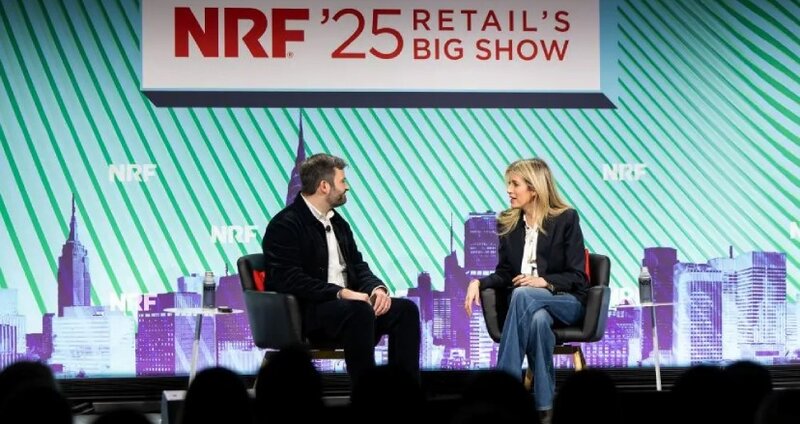How brands are using social media to build awareness and foster loyalty
NRF 2025: Creating community with Rare Beauty and The New Consumer
Since it debuted in September 2023, TikTok Shop, the ecommerce feature of the popular video hosting app, has become a huge marketplace. It surpasses Sephora, Shein and traditional home TV shopping networks, according to Dan Frommer, founder and editor in chief of The New Consumer.
“Half of TikTok’s active users say they’ve already made a purchase in TT Shop,” Frommer said during a session at NRF 2025: Retail’s Big Show with Rare Beauty Chief Marketing Officer Katie Welch. “Awareness is huge of this product. It’s kind of hard to miss. If you open the TikTok app, it’s kind of in your face.”
TikTok — and by extension, TikTok Shop — is especially popular among Gen Z consumers, who are a major segment of the app’s audience. According to Frommer’s latest Consumer Trends research, 60% of Gen Z consumers who are aware of TikTok say they use it every day.
One of the main categories that has benefited from the new sales channel is beauty brands, particularly those targeting Gen Z and millennial consumers who use social media to discover and experiment with new brands.
But are Gen Z shoppers loyal brand consumers? “Yes, they are,” Welch said. “The community is super engaged … whether it’s in the DMs, in our Instagrams.”
The makeup company, founded by Selena Gomez and which launched in January 2020, began engaging its consumers through Zoom calls, called “Rare Chats,” during the pandemic — the only “face-to-face” marketing opportunities available to the fledging business.
“We really got to know our community firsthand, and they stayed with us,” Welch said. Now the Rare Chats are offline events; Rare Beauty fans are also invited to come to the office and participate in hands-on makeup demonstrations, another way to build loyalty.
Rare Beauty does see repeat buyers — but the product has to be good. “They are discerning. That is what these social platforms have all taught them … is what makes them a good product,” she said, while noting that the Gen Z consumer is better educated on certain technical features like pigmentation and wear time.
What’s interesting about TikTok Shop is how demonstrable it is, Welch said. “You have to have a product that you can show how it works, does it show up, what other product” works with it. Showing how the product works is the “hook,” Welch said, that gets the Gen Z consumer excited about purchasing.
Rare Beauty also enjoys what Welch referred to as “the Sephora halo effect.” The brand has an exclusive global partnership with Sephora, which has a big presence on TikTop Shop.
As for a potential ban on TikTok, Welch said she’s a fan of the platform and how it has built such a large community for the company, but Rare Beauty will follow its community wherever they are — whether that’s Pinterest, Instagram, Snapchat or some other platform.
“There are other platforms. Pay attention to attention, where people’s attention is going,” she said. “And then you have to work with it.”




